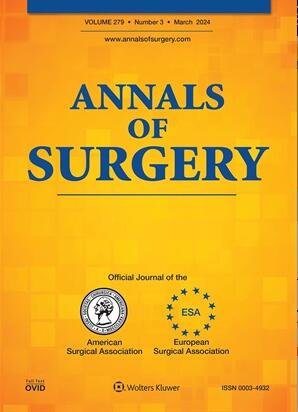医院配置导致成功实施增强恢复计划。
IF 7.5
1区 医学
Q1 SURGERY
引用次数: 0
摘要
目的:本研究通过独特的情境配置和实施条件来解释医院增强康复计划(erp)的成功实施。摘要:背景数据尽管erp在改善手术结果方面已被证实有好处,但在医院中实施往往效果不佳,可能是由于干预措施、当地环境背景和实施过程相互交织的复杂方式。方法运用符合性分析的数学方法,分析了ERP在全国外科合作中成功实施的充分必要条件。成功(高改善)被定义为在ERP依从率随着时间的推移改善最大的25%的医院之一。解释性条件包括五个领域的实施资源(支持干预措施的证据知识、领导支持、团队技能和凝聚力、利益相关者的支持以及适当的工作量和时间)、组织对变革的准备程度以及医院特征(教学状况、床位大小、手术量和患者群体的社会经济地位(SES))。患病率调整(PA)一致性和对阳性(PAC)覆盖率是数据拟合的度量,用于调整结果患病率的模型选择。结果86家医院中有26家(30.2%)成功实施了ERP。三种情景共同解释了bbbb70 %的医院的成功(PA一致性=0.719,PAC覆盖率=0.752):低ses医院准备改变,尽管在实施过程中缺乏团队技能和凝聚力;手术量小的医院已经做好了改变的准备,并且有很强的员工支持;以及缺乏领导支持但有适当工作量和足够时间进行实施的大容量医院。结论ERP的成功实施取决于当地情况,取决于组织变革的准备程度、员工的强烈支持、适当的工作量和充足的时间。本文章由计算机程序翻译,如有差异,请以英文原文为准。
Hospital Configurations Leading to Successful Implementation of Enhanced Recovery Programs.
OBJECTIVE
This study explains successful implementation of hospital enhanced recovery programs (ERPs) through unique configurations of contextual and implementation conditions.
SUMMARY BACKGROUND DATA
Despite proven benefits in improving surgical outcomes, ERPs are often ineffectively implemented in hospitals, possibly due to the complex ways in which the interventions, local environment contexts, and implementation processes intertwine.
METHODS
Using coincidence analysis, a mathematical method for analyzing configurations, we identified sufficient and necessary conditions for ERP implementation success in a national surgical collaborative. Success (high improvement) was defined as being among the 25% of hospitals with the greatest improvement in ERP adherence rate over time. Explanatory conditions included implementation resources in five domains (knowledge of evidence supporting interventions, leadership support, team skills and cohesion, stakeholder buy-in, and appropriate workload and time), organizational readiness to change, and hospital characteristics (teaching status, bed size, surgical volume, and socioeconomic status (SES) of patient populations). Prevalence-adjusted (PA) consistency and contrapositive (PAC) coverage, measures of data fit, were used in model selection adjusting for outcome prevalence.
RESULTS
Of the 86 hospitals, 26 (30.2%) successfully implemented ERP. Three scenarios collectively explained success for >70% of the hospitals (PA consistency=0.719, PAC coverage=0.752): Low-SES hospitals ready to change despite lacking team skills and cohesion during implementation; hospitals with low surgical volume which were ready to change and had strong staff buy-in; and high-volume hospitals that lacked leadership support but had appropriate workload and sufficient time for implementation rollout.
CONCLUSIONS
Successful ERP implementation varied by local context and relied on organizational readiness to change, strong staff buy-in, appropriate workload and sufficient time.
求助全文
通过发布文献求助,成功后即可免费获取论文全文。
去求助
来源期刊

Annals of surgery
医学-外科
CiteScore
14.40
自引率
4.40%
发文量
687
审稿时长
4 months
期刊介绍:
The Annals of Surgery is a renowned surgery journal, recognized globally for its extensive scholarly references. It serves as a valuable resource for the international medical community by disseminating knowledge regarding important developments in surgical science and practice. Surgeons regularly turn to the Annals of Surgery to stay updated on innovative practices and techniques. The journal also offers special editorial features such as "Advances in Surgical Technique," offering timely coverage of ongoing clinical issues. Additionally, the journal publishes monthly review articles that address the latest concerns in surgical practice.
 求助内容:
求助内容: 应助结果提醒方式:
应助结果提醒方式:


